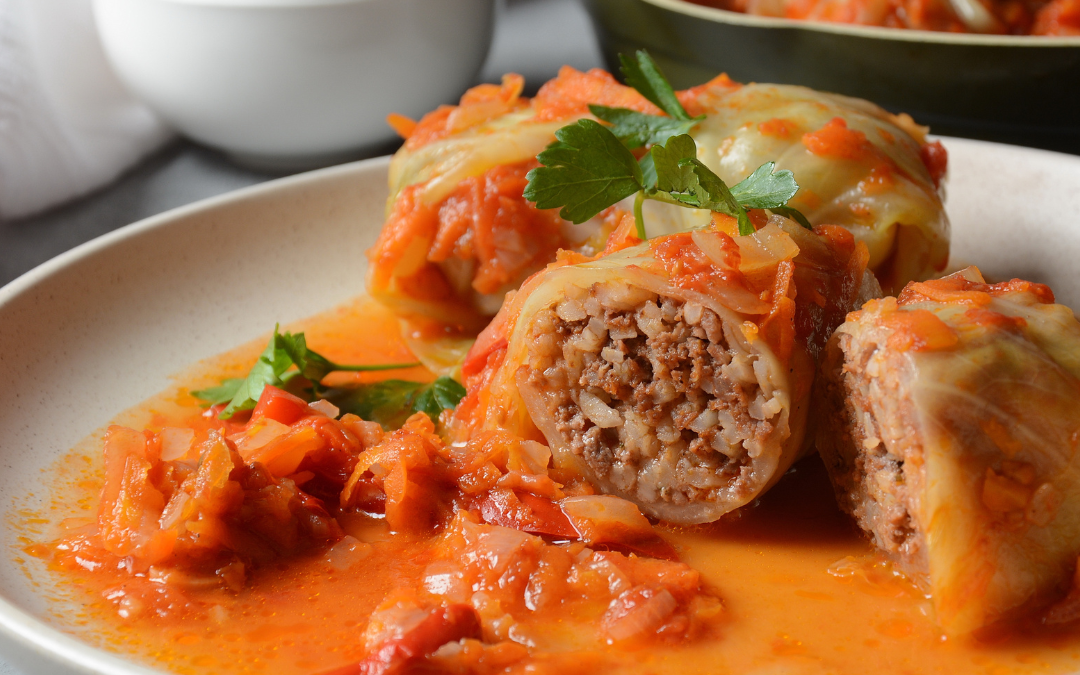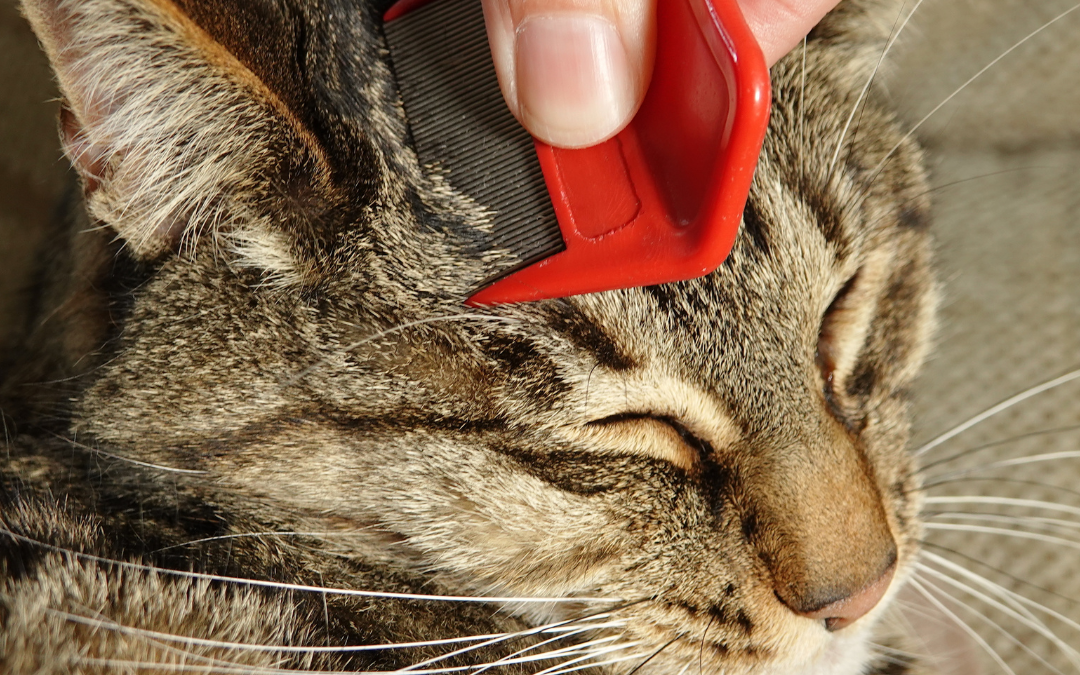
by Guest | May 20, 2025 | Eat Well, Featured, Recipes
Flexible Vegetarian Protein That’s Quick & Easy!
Ingredients
16 ounces firm or extra-firm tofu (fresh or frozen and thawed)
Soy-honey marinade
2 Tablespoons low-sodium soy sauce
2 Tablespoons vinegar (cider, rice or balsamic)
1 Tablespoon honey or brown sugar
1 Tablespoon vegetable oil (try sesame oil)
Soy-lime marinade
⅓ cup low-sodium soy sauce
⅓ cup lime juice
3 Tablespoons vegetable oil (try sesame oil)
Directions
- Wash hands with soap and water.
- Using a clean towel, press water out of the tofu and cut how you choose: triangles, cubes, slices or sticks.
- Mix marinade ingredients in a bowl. Add tofu and marinate for at least 30 minutes.
- Preheat oven to 350 degrees F.
- Drain tofu and place pieces on a baking sheet. Foil on the baking sheet makes clean-up easy.
- Bake until the tofu is firm and lightly browned, about 30 minutes. Turn pieces once during baking.
- Refrigerate leftovers within 2 hours.
Notes
- Try Baked Tofu instead of meat in tacos, stir-fries or skillet meals.
- Serve with vegetables and rice for a filling meal.

by Guest | Mar 14, 2025 | Eat Well, Featured, Recipes
This twist on a classic favorite is versatile and can be adapted based on the ingredients you have available.
Ingredients:
1 large head of cabbage
1 pound lean ground beef, pork, poultry (uncooked)
1 can (15 ounces) tomato sauce, divided (see Notes)
1 cup cooked brown rice (see Notes)
1 cup chopped onion
½ cup chopped bell pepper
¾ teaspoon garlic powder
½ teaspoon basil
½ teaspoon oregano
¼ to ½ teaspoon paprika or cayenne pepper
¼ teaspoon salt
¼ teaspoon black pepper
¼ cup chopped parsley, dill or cilantro (optional)
Directions:
- Wash hands with soap and water.
- Rinse fresh vegetables under running water before preparing.
- Preheat oven to 350 degrees F.
- Use these steps to remove 12 cabbage leaves from the head:
- Trim off the bottom of the cabbage and carefully remove the core with a sharp knife.
- Place cabbage, core-side down, in a deep microwave-safe dish along with one inch of water.
- Microwave on HIGH for 10 minutes.
- Carefully remove cabbage from the microwave.
- Let cool until safe to handle.
- Pull leaves from the outside of the cabbage and set aside. Return to the microwave for 2 to 3 minutes, if needed, to remove enough leaves.
- Spread ½ cup tomato sauce on the bottom of a 9×12-inch baking dish.
- In a large bowl, mix together the beef, rice, ½ cup tomato sauce, onion, bell pepper, garlic powder, basil, oregano, paprika, salt and black pepper.
- Put about ¼ cup meat mixture in the middle of a cabbage leaf near the core end. Roll the bottom edge of the cabbage over the meat, then fold each side into the middle and continue rolling tightly. Place the roll seam side down in the baking dish. Repeat with remaining leaves and filling.
- Pour the remaining tomato sauce over the rolls.
- Cover the dish tightly with a lid or foil and bake for 1 hour. The cabbage leaves should be tender and the inside temperature at least 160 degrees F on a food thermometer.
- Spoon a little sauce from the bottom of the dish over a serving cabbage rolls and top with chopped parsley, if desired.
- Refrigerate leftovers within 2 hours.
Notes:
- Use any cooked beans or grains in the filling, such as white beans and barley.
- For a flavorful tomato sauce, add 1 teaspoon sugar and ¼ teaspoon each cumin and coriander before dividing. You can also make a sauce with chopped vegetables such as carrots and zucchini.
- Use the remaining cabbage for a salad, soup or stir-fry.
- No microwave? You can soften the cabbage leaves other ways:
- Place the trimmed and cored cabbage in a deep pot. Cover with boiling water and simmer for about 4 minutes. Remove leaves with tongs as they soften.
- Place the trimmed and cored cabbage in the freezer. Defrost cabbage in the refrigerator. The leaves will peel off easily.
From FoodHero.org

by Renee Aufdermauer | Dec 5, 2024 | Featured, Uncategorized
Our pets bring joy, companionship, and a sense of well-being to our lives, playing a key role in our overall wellness. Whether it’s a wagging tail greeting us at the door or the soothing purr of a cat, pets help reduce stress and enhance our happiness. However, when fleas invade their space—and ours—it can quickly become a source of stress and frustration. Fleas not only irritate our pets, causing itching and discomfort, but they can also become a nuisance for the entire household. Taking proactive steps to manage fleas helps ensure that the wellness our pets provide is not overshadowed by the challenges these tiny pests bring.
While fleas can be a challenge, there are effective, budget-friendly, and non-toxic ways to tackle the problem. Fleas not only discomfort pets but can also impact human health and the home environment. Thankfully, with consistent effort and the right approach, you can control fleas without resorting to expensive or harmful treatments, keeping your pets and your home a haven of wellness.
Understanding Fleas and Their Lifecycle
Fleas are small but tenacious insects that thrive in warm, humid environments. They go through a complex life cycle with several stages, including eggs, larvae, pupae, and adults. Each stage can resist typical insecticides, which is why it’s important to address fleas at all stages of their life cycle to fully eliminate them. According to the CDC’s guidelines on flea control, a comprehensive four-step process is the most effective way to manage a flea infestation.
The Process to Manage Fleas in Your Home
Sanitation:
Thorough cleaning is the first and most important step in controlling fleas. Fleas and their eggs can hide in pet bedding, rugs, carpets, and even along the edges of walls. To break the flea life cycle, wash all bedding, rugs, and pet bedding in hot water, then vacuum thoroughly, including floors, carpets, and areas along walls. Sweep hard floors and vacuum often to pick up any stray fleas or eggs. This helps to reduce the flea population in your home without relying on toxic chemicals.
Pet Treatment:
It’s essential that every pet in the household is treated. Start by bathing your pets with soap and water to gently kill adult fleas. After the bath, use a flea comb to remove any remaining fleas, paying close attention to the face, neck, and area in front of the tail. Be sure to consult with your veterinarian to choose the best non-toxic flea treatment for your pets. There are many natural flea treatments available that don’t contain harsh chemicals, and your vet can guide you on the safest options.
Home Treatment:
Home treatment should begin at the same time as pet treatment to ensure that the flea life cycle is disrupted. While commercial pest control applicators can provide professional help, there are also natural home treatments available, like diatomaceous earth (food grade), which can be sprinkled around areas where fleas tend to hide.
Follow-Up:
Fleas are tough and resistant to insecticides at various stages of their life cycle. To fully eliminate fleas, you’ll need to follow up with additional treatments. The CDC recommends that you apply two or more follow-up treatments within 5-10 days after the initial treatment. Continue regular vacuuming and cleaning during this period to pick up any remaining eggs and juvenile fleas that might have been missed in earlier treatments.
Fleas are a common challenge for pet owners, but with the right approach, you can manage them without relying on expensive or toxic products. By following the CDC’s four-step process and integrating natural flea control methods, you can protect both your pets and your family from these pesky insects. Regular cleaning, pet treatments, home interventions, and follow-up care are essential to breaking the flea life cycle and keeping your home flea-free.
For more information visit: https://www.cdc.gov/fleas/section-name/index.html
For more local health and wellness information, visit www.tillamookcountywellness.org or follow Tillamook County Wellness on Facebook and Instagram.

by Guest | Nov 21, 2024 | Featured, Uncategorized, Why I'm In
Written by: Sarah Ermer, MPH, CHES; Prevention Specialist at Tillamook Family Counseling Center
What drew you/your organization to partner with Tillamook County Wellness?
I’m a recent transplant to Tillamook; I moved here at the end of January for my position at TFCC. When I was preparing to move, I was doing some searching online to learn more about health initiatives in the county. I distinctly remember sitting at my parents’ dining room table looking at the Tillamook County Wellness website on my laptop and thinking, “Wow, Tillamook County has a great system for health promotion!” After officially moving and starting at TFCC, I knew I needed to prioritize getting to know as many different people and organizations as I could in order to do my job well. One of the first people I talked to was Michelle Jenck, who is the coordinator for Tillamook County Wellness. My background and current position are well-aligned with Tillamook County Wellness, so she connected me with the Health Promotions committee. The rest is history!
What, if any, changes have you seen come about as a result of this work?
I haven’t been here long enough to say first-hand what larger changes have come about as a result of Tillamook County Wellness, so I’ll share about a moment that stands out to me. One of the first community events I went to was Healthy Kids Day at the YMCA, where the Tillamook County Wellness Access to Physical Activity committee held the Bike Rodeo. I was amazed by the number of bikes and helmets that were available to go home with families! After watching a long line of kids practice bike safety around the parking lot, I have no doubt that even that event alone created positive change.
What have you learned from being involved in this work?
One of my favorite parts of being involved in Tillamook County Wellness, and of Tillamook as a whole, is seeing how the community really does come together to make things happen. I’ve learned a lot about all the systems at play in the area, and the fact that Tillamook County Wellness brings so many of them together is an amazing model for any community that wants to build stronger coalitions. I’ve learned what it really looks like to work as a community!
What are your hopes for this work as it relates to you/your organization?
My work is focused on substance misuse/addiction prevention, and doing that work effectively means looking beyond substance use alone. If we want to prevent young people from drinking or using drugs, we have to be willing to go beyond telling them what NOT to do. It means creating an entire community that supports people who are struggling with their mental health, who need a place to go, or who need positive, healthy activities to help build their confidence. I’ve seen how effective Tillamook County Wellness is in mobilizing people to support health initiatives; I hope that we can continue to mobilize in building support for both physical and mental health access.
What are your hopes for this work as it relates to changing community health in Tillamook County.
Much like my hope as it relates to me/my organization, my hope for our community health is that our collective idea of health and wellness continues to expand. In so many communities, support for different areas of health is siloed. Mental health, physical activity, nutrition, healthcare, social connectedness, financial wellbeing… they all play into our quality of life. I hope that Tillamook County Wellness can continue to be a part of the bridge that connects all these areas of health.
Is there anything else you’d like to share?
Tillamook County has been such a wonderful place to live and work. Thank you to everyone who has been so welcoming! I’m excited to continue to be a part of this community 🙂
For more local health and wellness information, visit www.tillamookcountywellness.org or follow Tillamook County Wellness on Facebook and Instagram.

by Guest | Oct 18, 2024 | Eat Well, Featured, Lunch & Snack Recipes, Recipes
This festive combination of high-fiber whole wheat flour and canned pumpkin, creamy high-protein Greek yogurt, and a delicious medley of fall spices will give your little ghouls and goblins the energy they need for all their fun-filled Halloween activities! These pancakes are easy-to-make, wholesomely nutritious, and packed with your favorite flavors of the Fall season.
Ingredients:
- ¾ cup nonfat Greek yogurt
- ¾ cup milk
- 2 tablespoons butter plus additional for cooking the pancakes
- 1 ½ cups whole wheat flour
- 2 teaspoons baking powder
- ¾ teaspoon baking soda
- ½ teaspoon kosher salt
- ¾ teaspoons ground cinnamon
- ½ teaspoon ground ginger
- ⅛ teaspoon ground nutmeg
- ¾ cup pumpkin purée (not pumpkin pie filling)
- 2 large eggs
- 2 tablespoons pure maple syrup or honey
- 1 teaspoon pure vanilla extract
-
FOR SERVING (Optional):
- Pure maple syrup
- Butter
- Chopped toasted pecans
- Vanilla greek yogurt
Instructions:
In a medium bowl, whisk together the Greek yogurt and milk. Set aside and let rest for 5 minutes.
In a small bowl or saucepan, melt the butter. Set aside to cool.
In a large mixing bowl, whisk together the whole wheat flour, baking powder, baking soda, salt, cinnamon, ginger, and nutmeg until evenly combined.
To the bowl with the rested milk and yogurt, add the pumpkin puree, eggs, maple syrup, and vanilla. Whisk until well blended. Whisk in the melted, cooled butter.
Make a well in the center of the dry ingredients. Carefully pour in the wet ingredients. With a wooden spoon or rubber spatula, stir very gently, just until the flour disappears. The mixture will look lumpy. Let rest while the skillet preheats.
To cook: If you’d like to keep the pancakes warm between batches, preheat the oven to 200 degrees Fahrenheit and line a baking sheet with parchment paper. Preheat an electric griddle to 350 degrees F, or heat a large, nonstick skillet or cast iron skillet over medium low. Wait several minutes to allow the skillet fully preheat.
Melt a little butter on the skillet, or coat with nonstick spray. Scoop the batter into 1/4 cupfuls, leaving room for the pancakes to spread. Let cook on the first side until bubbles form on top and the edges of the pancakes look dry, about 4 minutes. Flip and cook on the other side, until the pancakes are golden and cooked through, about 2 to 3 minutes more. Adjust the heat as you go if the outsides begin to darken too quickly, before the insides are cooked through.
Repeat with remaining pancakes, adding more butter or nonstick spray to the skillet as needed and keeping the pancakes warm in the oven between batches as desired. Serve hot, with desired toppings.
Resource: https://www.wellplated.com/healthy-pumpkin-pancakes-recipe/





